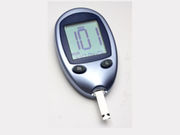Recommendations for T1D focus on monitoring, pharmacologic approaches to glycemic management
TUESDAY, Sept. 12, 2017 (HealthDay News) — Recommendations for the management and pharmacologic treatment of patients with diabetes have been updated; the new clinical guidelines were published online Sept. 12 in the Annals of Internal Medicine.
James J. Chamberlain, M.D., from St. Mark’s Hospital in Salt Lake City, and colleagues updated the Standards of Medical Care in Diabetes to provide evidence-based recommendations for the diagnosis and management of patients with diabetes. The American Diabetes Association Professional Practice Committee searched the literature to add, clarify, or revise recommendations based on new evidence and rated the recommendations depending on the quality of evidence.
The researchers recommend that most patients receiving intensive insulin regimens should self-monitor blood glucose before meals and snacks, at bedtime, after meals (occasionally), when they suspect low blood glucose, and before exercise and critical tasks such as driving. Continuous glucose monitoring is a useful tool to lower hemoglobin A1c (HbA1c) in selected adults with type 1 diabetes in conjunction with intensive insulin regimens. For nonpregnant adults, a reasonable HbA1c goal is less than 7 percent; more stringent goals might be suggested for selected individuals if they can be achieved without clinically significant hypoglycemia or other adverse effects. Recommendations were also provided for pharmacologic therapy for type 1 diabetes.
“This synopsis focuses on recommendations from the 2017 Standards of Care about monitoring and pharmacologic approaches to glycemic management for type 1 diabetes,” the authors write.
Several authors disclosed financial ties to the biopharmaceutical industry.
Copyright © 2017 HealthDay. All rights reserved.








